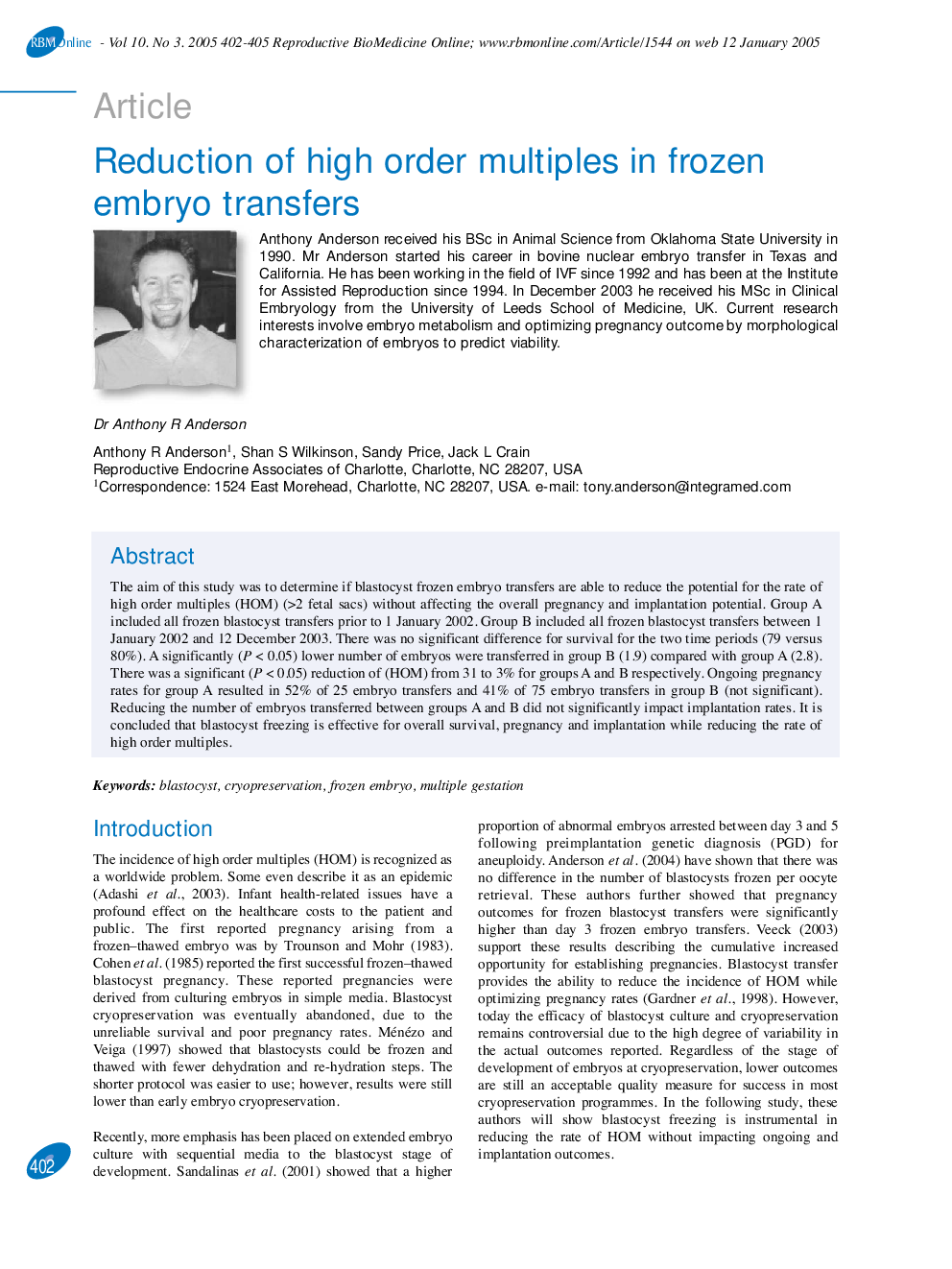| Article ID | Journal | Published Year | Pages | File Type |
|---|---|---|---|---|
| 9335380 | Reproductive BioMedicine Online | 2005 | 4 Pages |
Abstract
The aim of this study was to determine if blastocyst frozen embryo transfers are able to reduce the potential for the rate of high order multiples (HOM) (>2 fetal sacs) without affecting the overall pregnancy and implantation potential. Group A included all frozen blastocyst transfers prior to 1 January 2002. Group B included all frozen blastocyst transfers between 1 January 2002 and 12 December 2003. There was no significant difference for survival for the two time periods (79 versus 80%). A significantly (P < 0.05) lower number of embryos were transferred in group B (1.9) compared with group A (2.8). There was a significant (P < 0.05) reduction of (HOM) from 31 to 3% for groups A and B respectively. Ongoing pregnancy rates for group A resulted in 52% of 25 embryo transfers and 41% of 75 embryo transfers in group B (not significant). Reducing the number of embryos transferred between groups A and B did not significantly impact implantation rates. It is concluded that blastocyst freezing is effective for overall survival, pregnancy and implantation while reducing the rate of high order multiples.
Related Topics
Health Sciences
Medicine and Dentistry
Obstetrics, Gynecology and Women's Health
Authors
Anthony R Anderson, Shan S Wilkinson, Sandy Price, Jack L Crain,
